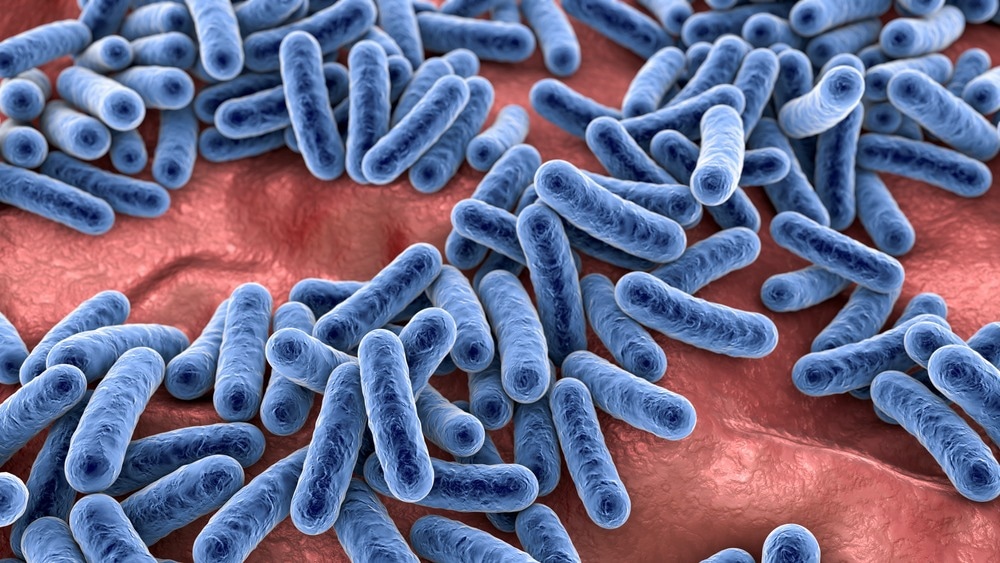Co-infecting pathogens and the microbiome from SARS-CoV-2 positive and negative samples

In a recent study published in PLOS ONE, researchers evaluated co-infections in severe acute respiratory syndrome coronavirus 2 (SARS-CoV-2)-infected patients. Additionally, they explored the differences in microbial profiles of SARS-CoV-2-positive and SARS-CoV-2-negative samples.

Background
The coronavirus disease 2019 (COVID-19) ruined people's health and lives globally in the past two years. Within a few months of its emergence, studies also reported co-infection(s) with other microbial pathogens, including bacteria, viruses, and fungi.
A meta-analysis reviewed 118 published studies between 2019 and 2021 to find that 19% of COVID-19 patients suffered from co-infections. Bacterial co-infection(s) were associated with the most severe outcomes, including death.
These studies primarily used real-time reverse transcriptase-polymerase chain reaction (RT-PCR) assays to detect co-infecting pathogens. Given the limited sensitivity of PCR assays, detection of co-infections remained limited to known or suspected targets.
About the study
In the present study, researchers analyzed clinical samples submitted to the California Department of Public Health (CDPH) for SARS-CoV-2 diagnostic testing between February 2020 and July 2020 for the presence of viral, bacterial, and fungal co-infecting pathogens and non-pathogens.
The sample set comprised 203 nasopharyngeal (NP) and oral pharyngeal (OP) swab samples, of which 101 and 102 were SARS-CoV-2-positive and SARS-CoV-2 negative, respectively. Also, the researchers collected most of these samples after the statewide 'Shelter-in-Place' mandate reduced the circulation of respiratory viral pathogens post-March 2020.
The team used version seven (v7) of the Lawrence Livermore Microbial Detection Array (LLMDA), a broad-spectrum microbial detection platform, for analyzing the collected samples. This platform quickly processed up to 96 clinical samples simultaneously. It could detect more than 12,000 microbial species through its deoxyribonucleic acid (DNA) probes, including 4219 viral, 5367 bacterial, and 265 fungal species. Further, it could detect 117 protozoa and 293 archaebacteria.
The team performed a complementary 16S ribosomal ribonucleic acid (rRNA) sequence analysis to assess the microbiome of the study samples. Finally, they performed bioinformatics and statistical analyses to evaluate the microbial profiles of these samples.
Study findings
The LLMDA detected SARS-CoV-2 in all samples with cycle threshold values of ≥34, i.e., 92/101 (91%) of SARS-CoV-2 RT-PCR-positive samples. The five most abundant bacteria detected by the LLDMA in SARS-CoV-2 positive and negative samples were Streptococcus pyogenes, Streptococcus agalactiae, Prevotella intermedia, Streptococcus pneumoniae, and Mycoplasma testudinis.
Also, it detected Haemophilus influenzae in eight of 101 SARS-CoV-2 positive samples. A meta-analysis by Lansbury et al. found the most common bacterial co-infections were due to Pseudomonas aeruginosa, Mycoplasma pneumonia, and Haemophilus influenzae. Additionally, they identified respiratory syncytial virus (RSV) and influenza A as the most frequent co-infecting viruses. They reviewed 30 studies covering 3,834 patients published between January and April 2020.
The LLMDA did not detect RSV or influenza A from SARS-CoV-2-positive samples, likely because their circulation decreased post-government enacted mandatory masking policies. However, they found human metapneumovirus in six SARS-CoV-2 negative samples collected in March/April 2020.
Overall, the LLMDA detected viruses and bacteria in 125 of 203 samples. Either the remaining 78 samples had insufficient microbial or viral DNA, or the viral and bacterial concentrations in these samples were below LLMDA's detection limit. Previous evaluations of LLMDA's other versions have shown that nose/throat swab samples are more efficient than NP samples for downstream nucleic acid extraction.
Firmicutes, Proteobacteria, Actinobacteria, Bacteroidetes, and Fusobacteria comprised 98% of the sequences detected by 16S rRNA sequence analysis. The 16S rRNA analysis for amplicon sequence variants (ASVs) showed that the nasal microbial profile was very individualized. While ASVs within the Moraxellaceae and Corynebacteriaceae had a higher prevalence in the SARS-CoV-2 positive samples, those within the Pasturellaceae and Streptococcaceae had a lower abundance.
Previous studies have fetched contrasting results about the changes in nasal and oral microbiome post-COVID-19. For instance, a recent study showed that inter-personal differences caused variations in the microbiome of nasal and oral regions based on the 16S rRNA sequencing, not COVID-19. Another study showed an apparent decrease in nasopharyngeal microbiome diversity in COVID-19 patients. Overall, there is inadequate data that SARS-CoV-2 infection impacts the overall diversity of the nasal and oral microbiome.
Conclusions
To summarize, the researchers detected one or more viruses or bacteria in 62% of the clinical samples examined in the current study, with S. pyogenes and S. pneumoniae identified as the most abundant co-infecting bacterial species in COVID-19 patients. The researchers could not correlate COVID-19 clinical symptoms with co-infections due to a shortage of clinical data. However, they did not observe a significant difference in the number of microbial pathogens detected from SARS-CoV-2 positive versus negative samples.
There is an urgent need for more longitudinal studies having cohorts with well-characterized clinical data to determine which populations in the nasal microbiome could be associated with COVID-19 progression and severity.
- Thissen, J. et al. (2022) "Evaluation of co-circulating pathogens and microbiome from COVID-19 infections", PLOS ONE, 17(12), p. e0278543. doi: 10.1371/journal.pone.0278543. https://journals.plos.org/plosone/article?id=10.1371/journal.pone.0278543
Posted in: Medical Science News | Medical Research News | Disease/Infection News
Tags: Bacteria, Bioinformatics, Coronavirus, Coronavirus Disease COVID-19, covid-19, Diagnostic, DNA, fungi, Influenza, Microbiome, Mycoplasma, Nasopharyngeal, Nucleic Acid, Pneumonia, Polymerase, Polymerase Chain Reaction, Public Health, Respiratory, Respiratory Syncytial Virus, Reverse Transcriptase, Ribonucleic Acid, SARS, SARS-CoV-2, Severe Acute Respiratory, Severe Acute Respiratory Syndrome, Streptococcus pneumoniae, Syndrome, Throat, Virus

Written by
Neha Mathur
Neha is a digital marketing professional based in Gurugram, India. She has a Master’s degree from the University of Rajasthan with a specialization in Biotechnology in 2008. She has experience in pre-clinical research as part of her research project in The Department of Toxicology at the prestigious Central Drug Research Institute (CDRI), Lucknow, India. She also holds a certification in C++ programming.
Source: Read Full Article




